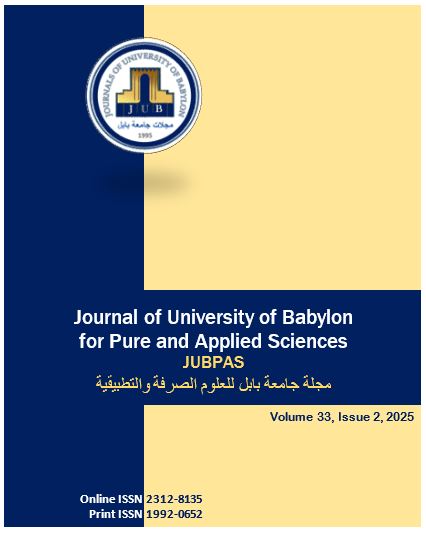Optical Properties of Polyvinyl Alcohol (PVA) Thin Films Doped with Tungsten Disulfide (WS₂) Nanoparticles
Main Article Content
Abstract
Background:
Polyvinyl alcohol (PVA) is a versatile synthetic polymer with excellent optical and mechanical properties, making it suitable choice for a range of applications. The incorporation of tungsten disulfide (WS₂) nanoparticles into PVA offers the potential to enhance these properties, enabling applications in flexible electronics and optoelectronic devices.
Materials and Methods:
Thin films of PVA doped with WS₂ nanoparticles at concentrations of 0.5%, 1%, and 2% were prepared using the casting method. The films were deposited with a thickness of 150 nm on glass substrates. Structural and optical characterizations were performed using X-ray diffraction (XRD) and UV-Vis spectroscopy to study the semi-crystalline nature and optical behavior of the composites.
Results:
The XRD analysis revealed that the semi-crystalline nature of pure PVA and the formation of crystalline WS₂ phases with increased doping ratio. UV-Vis measurement showed enhanced light absorption in the visible region, with a consistent red shift in the absorption edge. The direct band gap decreased from 4.1 eV for pure PVA to 4.03 eV for 2% WS₂-doped films, while the Urbach Energy increased, indicating higher structural disorder with increasing doping.
Conclusions:
The incorporation of the WS₂ nanoparticles into PVA significantly alters its structural and optical properties, reducing the band gap and enhancing light absorption. Results highlight the potential of PVA/WS₂ Nano-composites for use in photonic and optoelectronic applications.
Article Details
Section

This work is licensed under a Creative Commons Attribution 4.0 International License.
